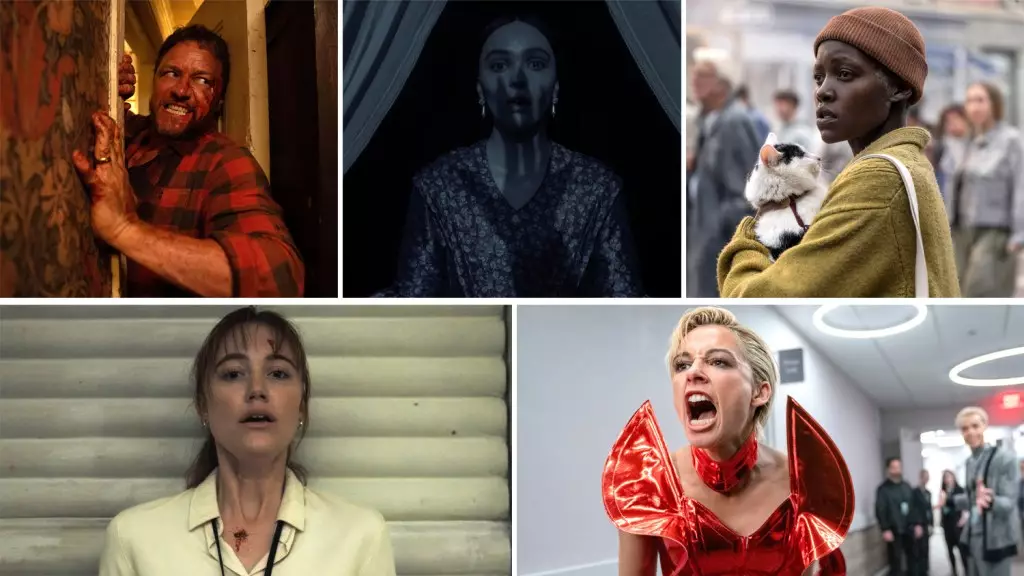As we dive into the 2024 cinematic landscape, it’s more than just numbers at the box office that merit attention. The resurgence of box office revenues is not merely about initial ticket sales, but a complex web of downstream profits derived from streaming, merchandise, and subscription services. Traditional studios like Disney and Warner Bros are leveraging lucrative streaming deals that transcend simple box office financials, whereby a film’s profitability can be vastly different when analyzed through various lenses, particularly as streaming services become paramount in defining a film’s success or failure. It’s interesting to note that studios like Amazon and Apple, which have carved out their theatrical niches, aren’t included in most profitability analyses—highlighting a sort of hidden dynamic in how we perceive “hits” and “flops” in contemporary cinema.
Regardless, it is clear that 2024 is becoming a fertile ground for films, both big-budget and indie, with many standout titles reaping remarkable earnings that far exceed expectations. We must recognize, however, that amidst this success, there are underlying factors at play that are shaping how films are perceived by audiences and critics alike. From grassroots marketing strategies to creative storytelling, the film industry is evolving in ways that could redefine its landscape.
The Undeniable Power of Horror Films
Among the most profitable genres this year, horror continues to reign supreme. Paramount’s “A Quiet Place: Day One” opened to a thunderous $52.2 million, demonstrating that, despite the absence of original stars, the strength of the brand remains potent. The ongoing fascination with horror isn’t just a matter of thrill-seeking; it embodies a reflection of contemporary societal anxieties and a cathartic experience for audiences. What particularly interests me is the way in which horror films successfully utilize lower production costs to generate high returns—an approach that allows filmmakers the freedom to invest in creative storytelling without the crippling weight of massive budgets.
Moreover, the persistence of horror’s appeal correlates with the duality of fear and hope that many audiences are seeking in troubled times. Films like “Smile 2,” which capitalized on social anxieties tied to fame and celebrity culture, indicate that horror is evolving—and doing so in a way that resonates with broader narratives beyond mere scares. These films aren’t just fear-infused spectacles; they tap into deeper psychological elements that make them both commercially viable and culturally influential.
Creative Marketing: The Game Changer
Another notable aspect driving the success of these films is their marketing strategies. Innovative campaigns like the viral street-art approach undertaken for “A Quiet Place: Day One” and the immersive grunt of promotional efforts for “Smile 2” illustrate how cutting-edge marketing can enhance a film’s visibility and attractiveness. In a climate where traditional advertising is often ignored, filmmakers are creatively finding ways to breach the noise, merging real-world interactions with movie promotion.
It’s an ingenious strategy—employing guerrilla marketing tactics that both entertain and lead to organic buzz among audiences, particularly as social media becomes the main stage for film promotion. The surprising reach of trailers that amass millions of views within days showcases that smart marketing can generate excitement and anticipation, pulling in viewers who may typically shun horror films. This trend is refreshing, showing that appealing directly to audiences with tailored marketing can unlock significant pathways to profitability while maintaining artistic integrity.
Box Office Bombs vs Hidden Gems
Despite the glittering box office wins, there are inevitable losers—films that underperform despite substantial marketing budgets and star power. The dynamics of audiences have shifted dramatically; viewers are savvier and increasingly selective. The stark reality is that not every well-publicized film or anticipated sequel will resonate, no matter how much studio executives believe.
However, nestled among these flops are hidden gems that manage to strike a chord with smaller audiences, ultimately building a dedicated fan base over time through word of mouth. As the lines increasingly blur between box office performance and cultural relevance, recognizing the “cult classics” in the making becomes crucial for industry insiders. This speaks volumes about our evolving engagement with cinema; we’re no longer passive consumers but active participants in deciding what films deserve to be celebrated.
The Future Landscape of Theatrical Releases
As we look forward, it’s pressing for studios to evolve beyond a single metric of success gauged simply by box office figures. The future of cinema will undoubtedly hinge on diversifying revenue systems further and cultivating an engaging experience for moviegoers. With the rise of streaming platforms and a visible shift in audience preferences, the approaches taken today will significantly influence tomorrow’s cinematic offerings.
Navigating this landscape requires a balanced blend of creativity, savvy production strategies, and astute marketing. Only then can we begin to embrace the multifaceted art of storytelling that cinema embodies, positioning ourselves toward a cinematic future that is as diverse and dynamic as the audiences it seeks to entertain. The profitability of storytelling lies not just in numbers but an enduring cultural resonance that must be meaningfully nurtured.

